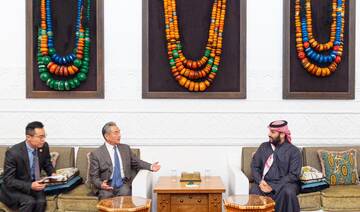LONDON: Anyone who has watched the 2000 movie “Gladiator” will have a vivid, if not necessarily wholly accurate, idea about what life must have been like for the legendary legionaries who imposed Rome’s will upon much of the Mediterranean and beyond for half a millennium.
In the movie, Russell Crowe plays Maximus Decimus Meridius, a Roman general who falls victim to imperial politics after defeating the Germanic tribes of northern Europe. Betrayed, he ends up having to fight for his life as a gladiator in the Colosseum.
But as a new exhibition at the British Museum in London makes clear, life for the soldiers of Rome between about 30 BCE and 476 CE was not all about bloody battles with marauding barbarians.
FASTFACT
• The exhibition, ‘Legion: Life in the Roman army,’ can be viewed at the British Museum in London until June 23.
“The story of the Roman army is more than just pitched battles and war,” said Sir Mark Jones, interim director of the British Museum.
The exhibition, entitled “Legion: Life in the Roman army,” “is a chance to show different perspectives and showcase the lives of the men, women, and children who formed one of the most famous armed forces in the world.”
The exhibition features 200 fascinating artefacts, “iconic Roman military objects alongside contemporary evidence of the real lives of men, women, and children in forts and frontiers across the empire.”

The world’s only intact legionary shield, unearthed at the site of the ancient city of Dura-Europos, on the banks of the Euphrates in Syria. (Photo credit: Yale University Art Gallery)
These include the world’s only known intact legionary shield, on loan Yale, the oldest and most complete classic Roman segmental body armor, recently excavated on a battlefield at Kalkriese in Germany; a cavalry mask helmet found in England; and a dragon standard unearthed in Germany.
But as fascinating as the exhibition is, it fails to tell the story of the legionaries who pushed further south into Arabia than many have previously realized — a story revealed by the discovery and excavation over the past 15 years by a joint French-Saudi archaeological team of a fortified camp on the very edge of the Roman empire.
The Roman historian Strabo described a disastrous expedition that penetrated as far south as modern-day Yemen in 25-24 BCE, but no archaeological evidence of this has been found, despite the reported loss of the large force led by Aelius Gallus, a Roman general from Egypt.
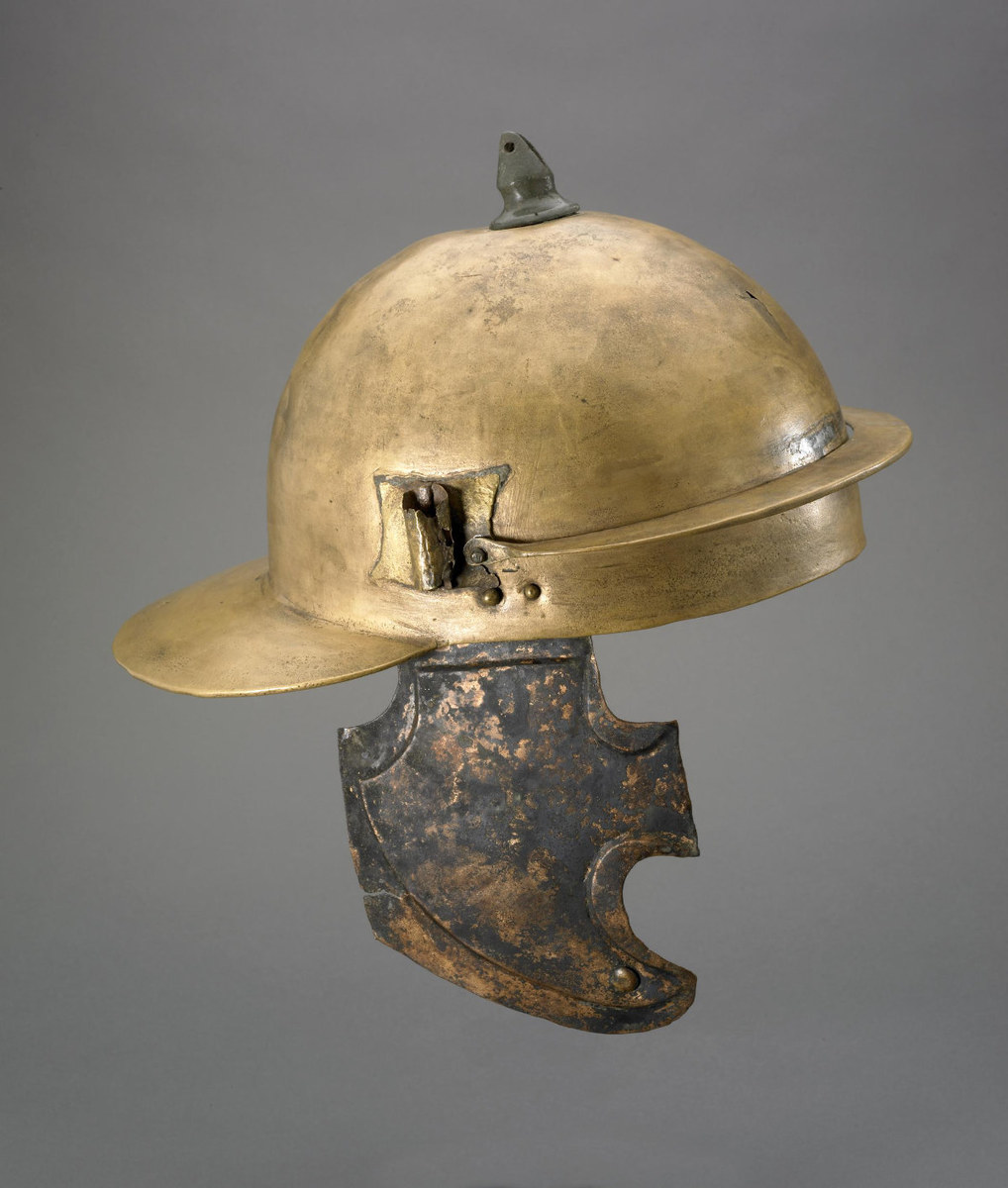
A copper alloy Roman legionary helmet from the British Museum exhibition. (Photo credit: British Museum)
The tale told by the stones and inscriptions at Hegra is the story of the men of Legio III Cyrenaica — the Third Cyrenean Legion. Thought to have been founded in Egypt by Mark Antony, in the early first century BCE the legion was transferred to the newly established Roman frontier province of Arabia, created after the annexation of the Nabataean Kingdom in 106 AD.
Here, it was based at Bosra, in the south of modern-day Syria. But at some point in the later 2nd century, a detachment of the legion was dispatched to police the conquered Nabataean town of Hegra, known in modern times as Mada’in Salih, which today is a UNESCO World Heritage site north of the Saudi town of AlUla.
There, a fort was built on the plateau on the southern edge of the town, in the lee of a hill on which a citadel was also constructed.
The first evidence of the presence of Roman troops emerged slowly, in inscriptions on stones used for building first found in the vicinity of Hegra as early as the 1970s.

Part of the southern perimeter wall of the Roman fort at Hegra. (Photo credit: Zbigniew T. Fiema)
“These found in the Hegra fort and by the southeast gate of the town could be identified as commemorative inscriptions left by still living soldiers,” said Zbigniew Fiema, an archaeologist from the University of Helsinki who is part of the Saudi-French Mada’in Salih Archaeological Project.
“The epigraphic customs of antiquity were characterized by something which we nowadays can identify with Facebook practices, because they often present simple yet informative messages — ‘Hello, I am here; I have done this and that.’
“The preservation of someone's name through an inscription was very important in antiquity. Also, ancient inscriptions are often invocations to deities, thanking or asking for protection.”
Written in Greek or Lartin, more than 14 inscriptions have been found, some of which bear witness to the presence of soldiers from Legio III Cyrenaica.
Several of the men who recorded their names for posterity describe themselves as “stationarii,” soldiers whose duties would have included monitoring travelers coming and going through the gates of Hegra, acting as a police force and maintaining highway security on what would have been an important stop on the imperial postal and transport system in Arabia.

Hegra (Mada’in Salih) monumental inscription dedicated to Imperator Marcus Aurelius in the Roman province of Arabia. (Wikimedia Commons)
Many of the inscriptions appear to be giving thanks to Hammon, a god worshipped in Libya and Upper Egypt and assimilated with the Roman deity Jupiter for successfully completed missions.
Some are etched into stone. But one of the longest is a Latin inscription painted in black, which somehow has survived, having endured the elements for over 1,800 years.
It begins: “To Our Jupiter Best and Greatest Hammon, and for the health of Our Lords the Emperors, and to the holy goddess Minuthis and the Genius of the Third Legion Cyrenaica, good fortune!”
It names five men — “Lollius Germanicianus the senatorial legate … Bennius Plautianus centurion and the soldiers’ friend … Flavius Saianus decurion, an excellent man, Flavius Nicomachus soldier of the legion, from the centuria of Aurelius Marcus, and Antonius Maximus Eros, from the centuria of Ancharius Secundus, stationarii” — all of whom “give thanks to the genius of the gate.”
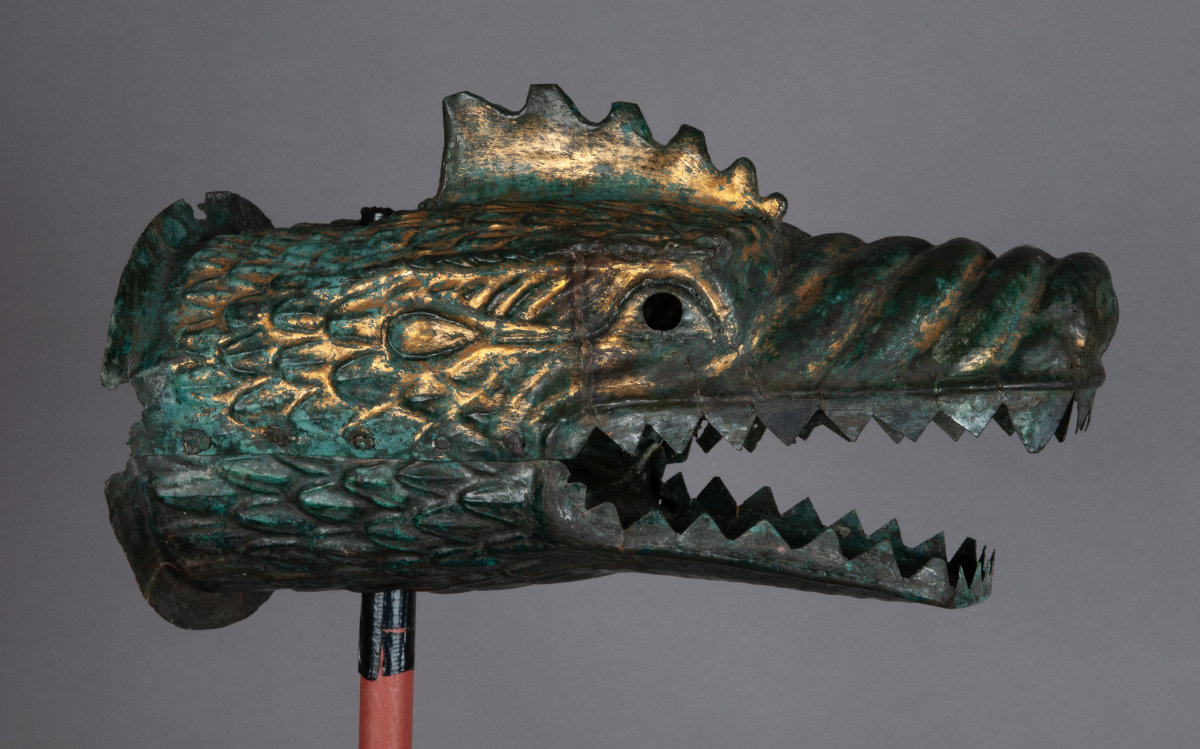
A fearsome dragon standard found in Germany. (Photo credit: Koblenz Landesmuseum)
Some inscriptions are much shorter: “Remember Komodos!” beseeches one Greek inscription, found on a stone reused in a gateway built in the late 2nd or early 3rd century. An inscription on another re-used building block reads “Remember Ulpis, the camel-rider!”
The fort at which some of these men would have been stationed — built to a standard Roman army design and complete with perimeter walls, barracks, two gates, corner towers and possibly a small bathhouse, or heated room — is thought to have been one of the earliest military structures in Roman Arabia.
Excavated over several seasons since 2015, the fort has yielded a wealth of information and artifacts testifying to the Roman presence in Arabia, including numerous ceramics, often from the Mediterranean, bronze artefacts, more than 150 Roman and Nabataean coins, and pieces of what are thought to be horse harnesses and armor.
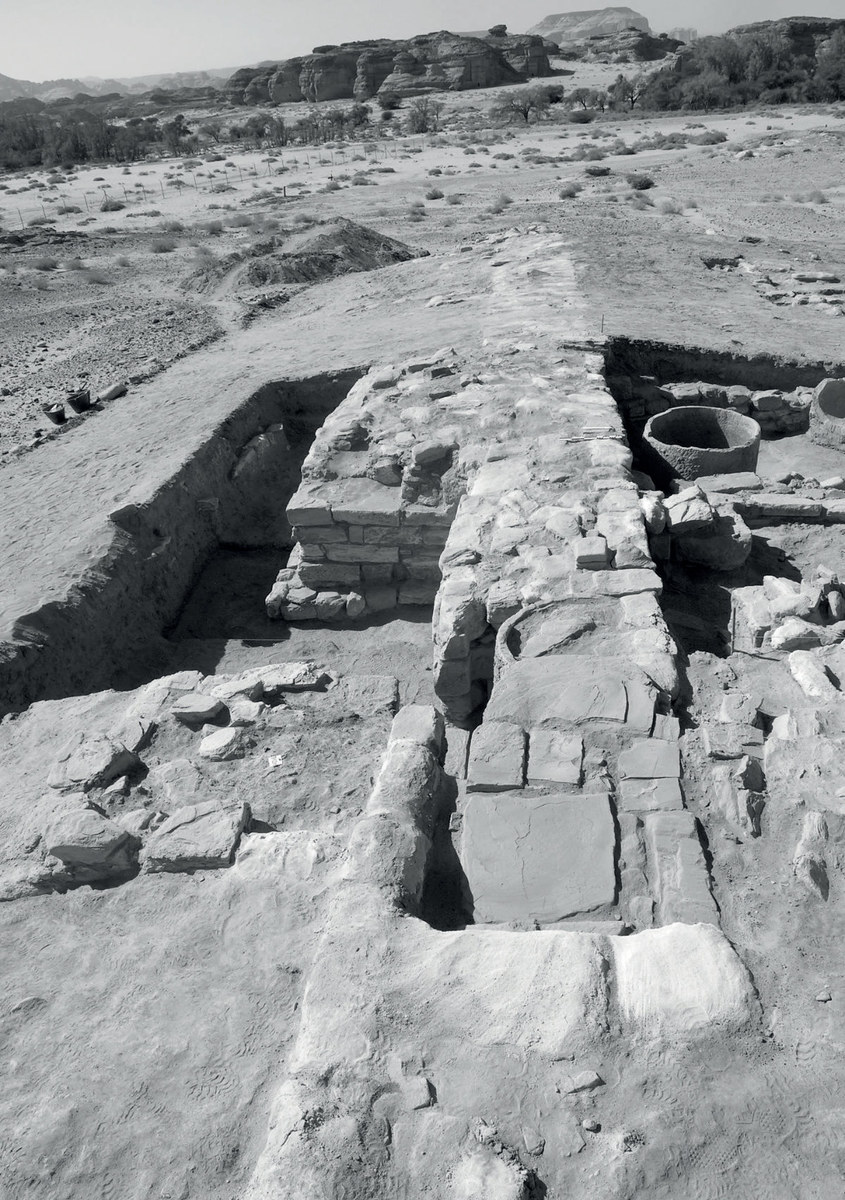
Part of the recently unearthed Roman fort in Hegra. (Photo credit: Zbigniew T. Fiema)
Also found were the butchered bones of animals that provided the garrison with meat — cattle, camel, donkey, horse, sheep and goat.
What isn’t clear is where the Roman soldiers were from.
“Some names indicate that their bearers originated in the Roman East, for example Syria, but some of these soldiers could have come from all over the world,” said Dr Fiema.
“We really do not know. However, since the units mentioned in these inscriptions are often attested for a long time as stationed in the Roman East, it will be reasonable to assume that the soldiers were often locals, drafted or volunteered in the Eastern provinces.”

A map of the Roman Empire shortly after Trajan's conquests of the kingdom of Nabataea, including Hegra in the interior. The province was soon reduced back to the line of limes Arabicus. (Wikimedia Commons: Tataryn)
The main significance of the discovery of the Roman fort at Hegra is “the solid confirmation of what we have suspected before that this part of the Hijaz was definitely a part of the Roman province of Arabia, and thus of the Roman Empire, and that the Roman presence was not ephemeral.
“We know that the 2nd century was a time of particularly intensive Roman activities in Arabia and in the Red Sea region. Also, at this point of time, we know that the Roman military presence in that part of Arabia extended at least until the end of the 3rd century.”
Prior to the discovery of the fort at Hegra, it was thought that the legions had advanced no further south into Arabia than the head of the Gulf of Aqaba.
“Scholarly hypotheses postulating that the northwest Hijaz was a part of the empire existed already in the late 20th century,” said Fiema.
“But the discovery of the Roman fort, and the Latin inscriptions, in Hegra have indeed confirmed the validity of these early hypotheses.
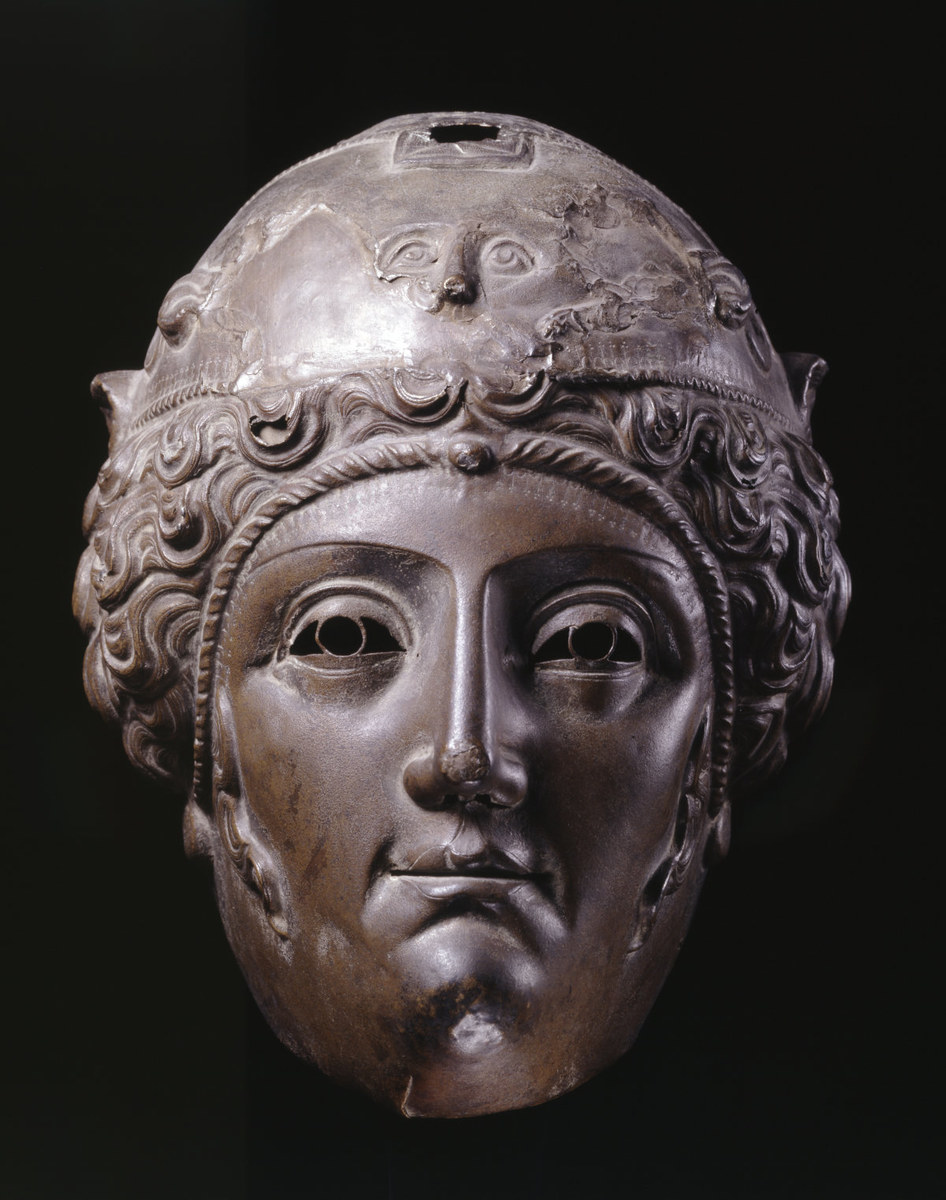
A cavalry helmet in the form of an Amazon. (Photo credit: British Museum)
“Unfortunately, most of the maps of the Roman Empire, which are published in school textbooks and scientific works, still show the border of the empire coterminous with that of the modern state of Jordan.”
So far, it is not known exactly when the Roman legions abandoned the Hijaz, or why.
Fiema has little doubt that archaeological evidence that the Romans advanced even further south into Arabia, as testified to by Strabo, remains to be unearthed.
“One should expect that intensive archaeological exploration of the Arabian Peninsula should bring more information on the Roman presence.”
There is some evidence that Roman legions may even have made it as far south as the Farasan Islands in the Red Sea off southwest Saudi Arabia.









